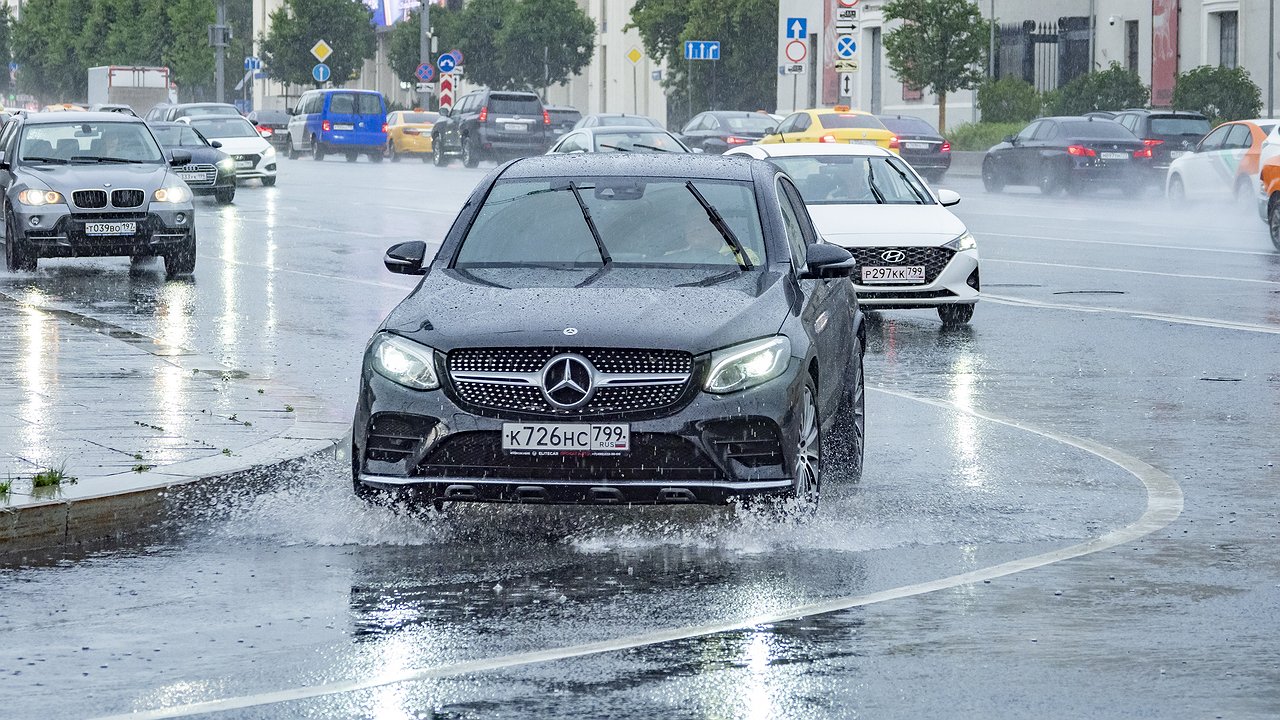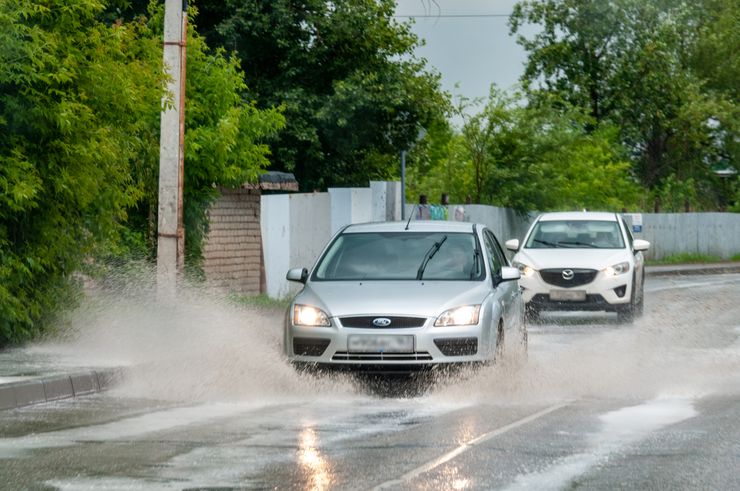What should the driver not do during heavy rainfall?
- July 18, 2023
- 0
The summer season is the time of rains and thunderstorms, when torrents of water flood towns and villages. As always unexpected for utilities. And if the air is
The summer season is the time of rains and thunderstorms, when torrents of water flood towns and villages. As always unexpected for utilities. And if the air is

Heavy rainfall brings the greatest problems to the driver and his car in the settlements. On a country road, the water simply flows off the asphalt, and real reservoirs sometimes form on the city streets. To begin with, let’s say that if possible, you should not try to impose such barriers at all. Even if you are sure that the water level in the mega puddle in front of you is below the critically dangerous level for a car. And this is not just about the wave you create yourself, which cuts through the surface of the water too quickly. You understand that it can fill the air intake of the car you are driving.
But even if you successfully dodge this danger, be aware: you may encounter a rambunctious truck driver who decides to force a spectacular barrier at high speed. And at the same time fill the oncoming passenger car “with the head”. Or the steering wheel of your car sinks into a hole that is invisible under a layer of muddy water. In this case, the car will inevitably “dive”. In both cases, the engine is choked with water and will then need a major overhaul. But it’s even worse with “electric trains”.
Recently, electric vehicles are becoming more and more common in our destinations. The flooding of an electric car during the next shower near your car is therefore becoming increasingly likely. No one can predict in advance what will close in this thing when it is submerged in storm currents.
How such a surplus will affect the electrical system of passing vehicles and their passengers is also difficult to predict. So during the next urban flood, just try to stay away from electric vehicles. Yes, and also from street charging stations. Unless, of course, you are not attracted by the glory of the first owner of a car with an internal combustion engine, who managed to “charge” from the mains.
If it seems to you that a heavy rain and turbulent streams on the sidewalk will at least temporarily save you from crazy electric scooters and frozen e-bike couriers, then do not even get your hopes up. Not even the tsunami can stop the former – they have a “counter” for the rent per minute, so to hell with the flood and the arguments of reason! For delivery drivers, time is money. And they are ready to deliver their fast food even under a meteor shower. Both categories of electric citizens, in dry weather as well as in a downpour, crawl head over heels under the wheels of cars.
Meanwhile, the driver, looking at the road through the jets of water, focuses mainly on what is happening in front of the car. And therefore the driver may not be able to react in time to the appearance of a sudden electric scooter from somewhere on the side. So when it rains, don’t forget to keep an eye on what’s happening around the car.

Heavy rainfall brings the greatest problems to the driver and his car in the settlements. On a country road, the water simply flows off the asphalt, and real reservoirs sometimes form on the city streets. To begin with, let’s say that if possible, you should not try to impose such barriers at all. Even if you are sure that the water level in the mega puddle in front of you is below the critically dangerous level for a car. And this is not just about the wave you create yourself, which cuts through the surface of the water too quickly. You understand that it can fill the air intake of the car you are driving.
But even if you successfully dodge this danger, be aware: you may encounter a rambunctious truck driver who decides to force a spectacular barrier at high speed. And at the same time fill the oncoming passenger car “with the head”. Or the steering wheel of your car sinks into a hole that is invisible under a layer of muddy water. In this case, the car will inevitably “dive”. In both cases, the engine is choked with water and will then need a major overhaul. But it’s even worse with “electric trains”.
Recently, electric vehicles are becoming more and more common in our destinations. The flooding of an electric car during the next shower near your car is therefore becoming increasingly likely. No one can predict in advance what will close in this thing when it is submerged in storm currents.
How such a surplus will affect the electrical system of passing vehicles and their passengers is also difficult to predict. So during the next urban flood, just try to stay away from electric vehicles. Yes, and also from street charging stations. Unless, of course, you are not attracted by the glory of the first owner of a car with an internal combustion engine, who managed to “charge” from the mains.
If it seems to you that a heavy rain and turbulent streams on the sidewalk will at least temporarily save you from crazy electric scooters and frozen e-bike couriers, then do not even get your hopes up. Not even the tsunami can stop the former – they have a “counter” for the rent per minute, so to hell with the flood and the arguments of reason! For delivery drivers, time is money. And they are ready to deliver their fast food even under a meteor shower. Both categories of electric citizens, in dry weather as well as in a downpour, crawl head over heels under the wheels of cars.
Meanwhile, the driver, looking at the road through the jets of water, focuses mainly on what is happening in front of the car. And therefore the driver may not be able to react in time to the appearance of a sudden electric scooter from somewhere on the side. So when it rains, don’t forget to keep an eye on what’s happening around the car.
Source: Avto Vzglyad
Donald Salinas is an experienced automobile journalist and writer for Div Bracket. He brings his readers the latest news and developments from the world of automobiles, offering a unique and knowledgeable perspective on the latest trends and innovations in the automotive industry.